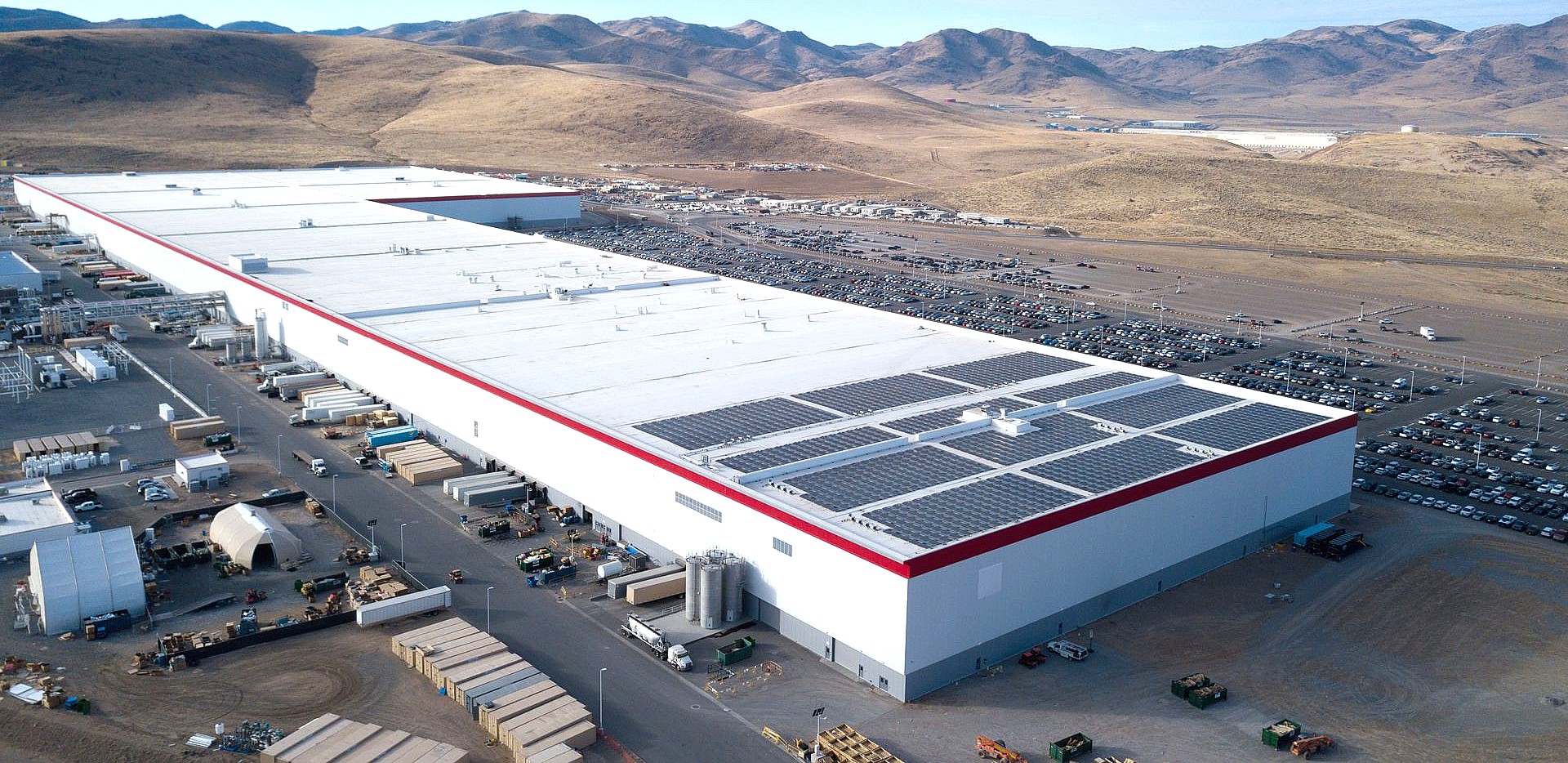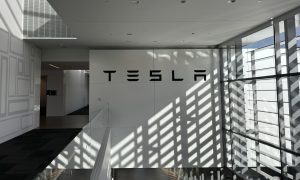

News
Tesla employee foregoes $1M payment, works with FBI to thwart cybersecurity attack
Sometimes, the events that transpire inside a company could be just as exciting and nail-biting as the most popular thrillers in fiction. In Tesla’s case, such a scenario recently played out, as a worker in Gigafactory Nevada ended up turning down a $1 million incentive, working closely with the FBI, and thwarting a planned cybersecurity attack against the electric car maker.
This Tuesday, the Department of Justice announced the arrest of Egor Igorevich Kriuchkov, a Russian citizen accused of conspiring to breach the network of a US company and introduce malware to compromise the said company’s networks. Media reports about the incident have identified the US company to be electric car maker Tesla. Interestingly enough, a criminal complaint filed by the FBI Las Vegas Field Office suggests that the attempted cybersecurity attack is no ordinary hacking attempt — it may very well be part of a well-financed, organized, scheme.
The plan begins
The remarkable story began when a Russian-speaking, non-US citizen working at Tesla’s Gigafactory Nevada was contacted by Kriuchkov. The employee, whose identity has not been revealed, has access to the electric car maker’s computer networks. On July 16, the Russian citizen contacted the Giga Nevada employee through WhatsApp asking to meet with him in Sparks, Nevada. As noted in a report from Clearance Jobs, the fact that Kriuchkov approached a Russian-speaking, non-US citizen working at Gigafactory Nevada suggests that the team behind the cyberattack attempt has done their research well.
The Tesla employee, some colleagues, and Kriuchkov met socially from August 1-3, which included a trip to Lake Tahoe. Interestingly enough, Kriuchkov reportedly declined to be present in any photos that were taken during the trip. At one point when the group was taking a photo during a picturesque sunset, Kriuchkov reportedly remarked that he would “just remember the beauty of the sunset and did not need a photograph.” After the relatively harmless Lake Tahoe trip, the Russian citizen asked the Tesla employee to meet with him for some “business.”
Down to “business”
During their “business” meeting, Kriuchkov revealed his hand. The plan involved the Tesla employee inserting malware provided by Kriuchkov and his associates to the electric car maker’s systems. After the malware is inserted, a distributed denial of service (DDoS) attack would occur that could allow the hackers to occupy the Tesla information security team. The malware would also allow the hackers to extract corporate and network data, which would be held ransom until the electric car maker pays up. For his participation in the ploy, the Gigafactory Nevada employee would receive $500,000, later raised to $1 million, to be paid in cash or bitcoin.
Unfortunately for Kriuchkov and his team, the Giga Nevada employee actually reported the planned cybersecurity attack to Tesla, which, in turn, contacted the FBI. The FBI stepped in, and with the agency’s help, the Tesla employee continued to communicate with Kriuchkov, trying to get as much information as possible about the hackers’ processes, procedures, and infrastructure. The efforts proved fruitful. In one conversation, the hacker reportedly boasted that his team had recently received a ransom worth over $4 million from a high profile company. Later reports would reveal that the company in question was CWT Travel, which reportedly paid a ransom of $4.5 million.
The plan falls through
During a meeting on August 19, the Tesla employee, wearing a wire from the FBI, met with Kriuchkov. The hacker agreed to pay an advance of $11,000 to the Giga Nevada worker. Two days later, on August 21, the Tesla employee was contacted by the hacker once more, who stated that the project was being “delayed” and all payments relating to the plan would not be transferred until a later date. Kriuchkov also informed the Tesla employee that he was leaving the area the following day. Behind the scenes, the FBI was able to get in touch with the hacker, who, in turn, drove overnight from Reno, Nevada to Los Angeles in what appeared to be an attempt to flee the United States.
Kriuchkov was unsuccessful, as he was arrested on August 22, 2020 in Los Angeles. The hacker is currently being detained pending trial. Fortunately for Tesla, the company was able to get away from what could have been a serious cybersecurity attack, and it has one employee to thank for it. It takes a lot, after all, to say no to a $1 million reward, as others have compromised far more for far less.
Read the FBI’s complaint against Kriuchkov below.
Complaint Egor Kriuchkov 3 20 Mj 83-0-0 by Simon Alvarez on Scribd
News
Tesla begins Robotaxi certification push in Arizona: report
Tesla seems serious about expanding its Robotaxi service to several states in the coming months.

Tesla has initiated discussions with Arizona transportation regulators to certify its driverless Robotaxi service in the state, as per a recent report from Bloomberg News. The move follows Tesla’s launch of its Robotaxi pilot program in Austin, Texas, as well as CEO Elon Musk’s recent comments about the service’s expansion in the Bay Area.
The Arizona Department of Transportation confirmed to Bloomberg that Tesla has reached out to begin the certification process for autonomous ride-sharing operations in the state. While details remain limited, the outreach suggests that Tesla is serious about expanding its driverless Robotaxi service to several territories in the coming months.
The Arizona development comes as Tesla prepares to expand its service area in Austin this weekend, as per CEO Elon Musk in a post on X. Musk also stated that Tesla is targeting the San Francisco Bay Area as its next major market, with a potential launch “in a month or two,” pending regulatory approvals.
Tesla first launched its autonomous ride-hailing program on June 22 in Austin with a small fleet of Model Y vehicles, accompanied by a Tesla employee in the passenger seat to monitor safety. While still classified as a test, Musk has said the program will expand to about 1,000 vehicles in the coming months. Tesla will later upgrade its Robotaxi fleet with the Cyercab, a two-seater that is designed without a steering wheel.
Sightings of Cybercab castings around the Giga Texas complex suggests that Tesla may be ramping the initial trial production of the self-driving two-seater. Tesla, for its part, has noted in the past that volume production of the Cybercab is expected to start sometime next year.
In California, Tesla has already applied for a transportation charter-party carrier permit from the state’s Public Utilities Commission. The company is reportedly taking a phased approach to operating in California, with the Robotaxi service starting with pre-arranged rides for employees in vehicles with safety drivers.
News
Tesla sets November 6 date for 2025 Annual Shareholder Meeting
The automaker announced the date on Thursday in a Form 8-K.

Tesla has scheduled its 2025 annual shareholder meeting for November 6, addressing investor concerns that the company was nearing a legal deadline to hold the event.
The automaker announced the date on Thursday in a Form 8-K submitted to the United States Securities and Exchange Commission (SEC). The company also listed a new proposal submission deadline of July 31 for items to be included in the proxy statement.
Tesla’s announcement followed calls from a group of 27 shareholders, including the leaders of large public pension funds, which urged Tesla’s board to formally set the meeting date, as noted in a report from The Wall Street Journal.
The group noted that under Texas law, where Tesla is now incorporated, companies must hold annual meetings within 13 months of the last one if requested by shareholders. Tesla’s previous annual shareholder meeting was held on June 13, 2024, which placed the July 13 deadline in focus.
Tesla originally stated in its 2024 annual report that it would file its proxy statement by the end of April. However, an amended filing on April 30 indicated that the Board of Directors had not yet finalized a meeting date, at least at the time.
The April filing also confirmed that Tesla’s board had formed a special committee to evaluate certain matters related to CEO Elon Musk’s compensation plan. Musk’s CEO performance award remains at the center of a lengthy legal dispute in Delaware, Tesla’s former state of incorporation.
Due to the aftermath of Musk’s legal dispute about his compensation plan in Delaware, he has not been paid for his work at Tesla for several years. Musk, for his part, has noted that he is more concerned about his voting stake in Tesla than his actual salary.
At last year’s annual meeting, TSLA shareholders voted to reapprove Elon Musk’s compensation plan and ratified Tesla’s decision to relocate its legal domicile from Delaware to Texas.
Elon Musk
Grok coming to Tesla vehicles next week “at the latest:” Elon Musk
Grok’s rollout to Tesla vehicles is expected to begin next week at the latest.

Elon Musk announced on Thursday that Grok, the large language model developed by his startup xAI, will soon be available in Tesla vehicles. Grok’s rollout to Tesla vehicles is expected to begin next week at the latest, further deepening the ties between the two Elon Musk-led companies.
Tesla–xAI synergy
Musk confirmed the news on X shortly after livestreaming the release of Grok 4, xAI’s latest large language model. “Grok is coming to Tesla vehicles very soon. Next week at the latest,” Musk wrote in a post on social media platform X.
During the livestream, Musk and several members of the xAI team highlighted several upgrades to Grok 4’s voice capabilities and performance metrics, positioning the LLM as competitive with top-tier models from OpenAI and Google.
The in-vehicle integration of Grok marks a new chapter in Tesla’s AI development. While Tesla has long relied on in-house systems for autonomous driving and energy optimization, Grok’s integration would introduce conversational AI directly into its vehicles’ user experience. This integration could potentially improve customer interaction inside Tesla vehicles.
xAI and Tesla’s collaborative footprint
Grok’s upcoming rollout to Tesla vehicles adds to a growing business relationship between Tesla and xAI. Earlier this year, Tesla disclosed that it generated $198.3 million in revenue from commercial, consulting, and support agreements with xAI, as noted in a report from Bloomberg News. A large portion of that amount, however, came from the sale of Megapack energy storage systems to the artificial intelligence startup.
In July 2023, Musk polled X users about whether Tesla should invest $5 billion in xAI. While no formal investment has been made so far, 68% of poll participants voted yes, and Musk has since stated that the idea would be discussed with Tesla’s board.
-

 Elon Musk1 week ago
Elon Musk1 week agoTesla investors will be shocked by Jim Cramer’s latest assessment
-

 Elon Musk3 days ago
Elon Musk3 days agoElon Musk confirms Grok 4 launch on July 9 with livestream event
-

 Elon Musk17 hours ago
Elon Musk17 hours agoxAI launches Grok 4 with new $300/month SuperGrok Heavy subscription
-

 News7 days ago
News7 days agoTesla Model 3 ranks as the safest new car in Europe for 2025, per Euro NCAP tests
-

 Elon Musk2 weeks ago
Elon Musk2 weeks agoA Tesla just delivered itself to a customer autonomously, Elon Musk confirms
-

 Elon Musk1 week ago
Elon Musk1 week agoxAI’s Memphis data center receives air permit despite community criticism
-

 Elon Musk2 weeks ago
Elon Musk2 weeks agoTesla’s Omead Afshar, known as Elon Musk’s right-hand man, leaves company: reports
-

 News2 weeks ago
News2 weeks agoXiaomi CEO congratulates Tesla on first FSD delivery: “We have to continue learning!”
















